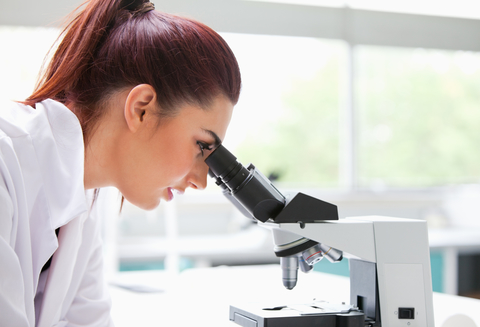Moleculomics helps get effective drugs to market quickly and cheaply

Getting better drugs to market faster, and at a fraction of the cost, is a step closer thanks to technology for speeding up the testing process, which is being developed by a Swansea University spin-out Moleculomics (Swansea University, 2017).
Moleculomics has been developing comprehensive platforms of computer generated models for protein structures in the human body. Using the latest high performance computing technology, they are now able to run millions of mathematical simulations over short spaces of time to determine how all these proteins interact with various chemical compounds they are exposed to in real life conditions. This means the company can rapidly accelerate discovery of new drug leads as well as predict whether a compound will provoke an adverse drug reaction in the human body.
The high cost of drug development is a major obstacle to finding cures for many diseases. Although the exact figures are disputed, some experts put the cost of drug development today at £1.15bn per drug. Over half the resources needed to develop a new drug are required during clinical trials. For every marketed medicine that is profitable, 25,000 chemical compounds will have been tested. Twenty five of these will have gone into clinical trials and five received approval for marketing. One in 5,000 medicines make it to market. Typically, it will take twelve years to get a new drug from the initial drug discovery stage to market.
Moleculomics was set up by Dr Jonathan Mullins at Swansea University’s Medical School, and was supported by Swansea University’s Research, Engagement and Innovation Services team. Moleculomics funds two senior researchers and four PhD students at Swansea University.
Moleculomics are now in the process of developing a new set of tools and processes which will make it possible to distinguish between a “safe” drug destined for market and a “bad” drug destined to be withdrawn from the development process due to toxic effects towards the beginning of the drug development process.
They will also shortly be launching their flagship product Human3DProteome. This will, for the first time, enable the high throughput screening of candidate small molecule compounds against every protein in the human body, in the form of a library of over 30,000 potential drug targets. The programme of research receives funding from the Government of Canada, the UK Ministry of Defence, Unilever, Dow and NC3Rs.
Jonathan Mullins said “It’s an exciting development that addresses head-on why certain compounds make good, generally safe, drugs and others are associated with more toxicity to the human body, by profiling the intricate interactions that they have with many hundreds of receptors.”
Dr Will Krawszik, Head of Operations for Moleculomics, and a former member of staff at Swansea University, said “This will provide a tool which can predict the outcome of a drug development project before even entering the laboratory, all using the latest supercomputing technology and some highly innovative algorithms.”
The workflows being developed as part of this solution will provide a powerful open-ended, lead discovery environment, identifying on-target and off-target interactions across the whole proteome. There will be detailed characterisation of active sites and millions of protein-compound interactions, involving thousands of lead compounds, screened for interaction with 1,500 drug targets of known pharmacological and therapeutic action. They will provide a drug repurposing platform featuring all 1,600 FDA approved drugs and tens of thousands of new repurposing leads.
By conducting computer-based in silico analysis at the beginning of the drug discovery stage, many more potential drugs can be considered for a greater diversity of therapeutic applications. Drugs that are likely to fail would be taken out of the process before clinical trials begin, allowing more resources to be placed on those that are likely to succeed. Given that over half the resources taken to develop a new drug are required at the various clinical trial stages, the time and cost saving of this new technology is huge, and the impact on the global population potentially profound.
As a vehicle for the advancement of alternative technologies for small molecule discovery and purposing, Moleculomics, formed in 2012, has developed powerful in silico protein structural modelling and ligand docking platforms, at proteome-scale, for simulating real life conditions and molecular interactions at whole system level.
R&D is built on a track record of structural modelling research featured in more than fifty journal publications. Over the past four years Moleculomics have been delivering commercial R&D programs including Hit-to-Lead and toxicity screening work in prestigious projects with UK Ministry of Defence, Unilever, Dow and NC3Rs resulting in a range of technologies described as “world leading”.








